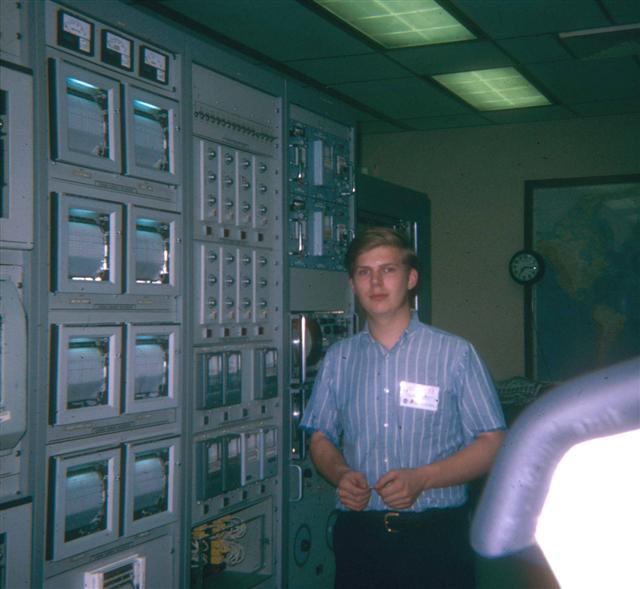Participation in Apollo 12 and 13
At age 15, I asked D. E. Olson, a physics professor at the UofM, if I could work as an intern summers as part of his atmospheric physics research program. During the next three years I enjoyed building apparatus, sending instrumented balloons aloft during auroras at 2AM, and maintaining the microwave telemetry tracking equipment, an AN/GMD-1.
After the Apollo 11 flight in July of 1969, some researchers (UofM Prof. George Freier) realized that the 15 tons/sec of exhaust gases emitted by the Saturn V would act as an electrical conductor, and might make it possible to do “ohms law” in the atmosphere, so as to learn a little about the larger atmospheric electrical system. I took it upon myself to make phone calls to Kennedy Space Center, and arranged the use of their telemetry equipment during the launch of Apollo 12 and 13… To this day I am amazed that the Office of Naval Research, who was funding the UofM program, then allowed the use of their funds to send a high school student on such a junket.. I sometimes think there was a high level person at NASA who smiled on us… and made the doors open…
The picture below is one of our balloon packages going up, with an instrument package about 50 ft. below the parachute, containing an electrometer for measuring air-earth current, a barometric sensor to determine altitude, and the 1.6 GHz radio transmitter. The device on the right is a is one of our “field mills” that measured volts/meter at ground level by means of a rotating disk and a stator plate thus converting the static atmospheric potential into a zero referenced alternating current that could be amplified and recorded.


Here I am at Manned Spacecraft Operations, in the metrological area, where we discussed ideas about the conditions that had triggered the lightning strike on Apollo 12, and how our instrumentation might help predict such conditions during future launches. In later years, under the guidance of Prof. D.E. Olson, KSC deployed a network of similar devices as a warning system, newer versions of which are still in service, and still called “Field Mills” at the Cape!

Walking down the hall in the Manned Spacecraft Operations (MSO) building, I took a picture of this last minute packing list for a trip to the moon! (I like the “extra film” entry)

Some Air Force photographers had an extra telephoto lens that mated with my camera at Apollo 13…


They were nice enough to mail out a certificate..

Frosting on the cake for a 17 year old… 400 cu. in. engine, boy did it go fast down those empty highways around the cape…

My high school mentor, UofM Prof. Olson, at the Cape, standing in front of some of our (covered) instrumentation just after a later Apollo launch.
